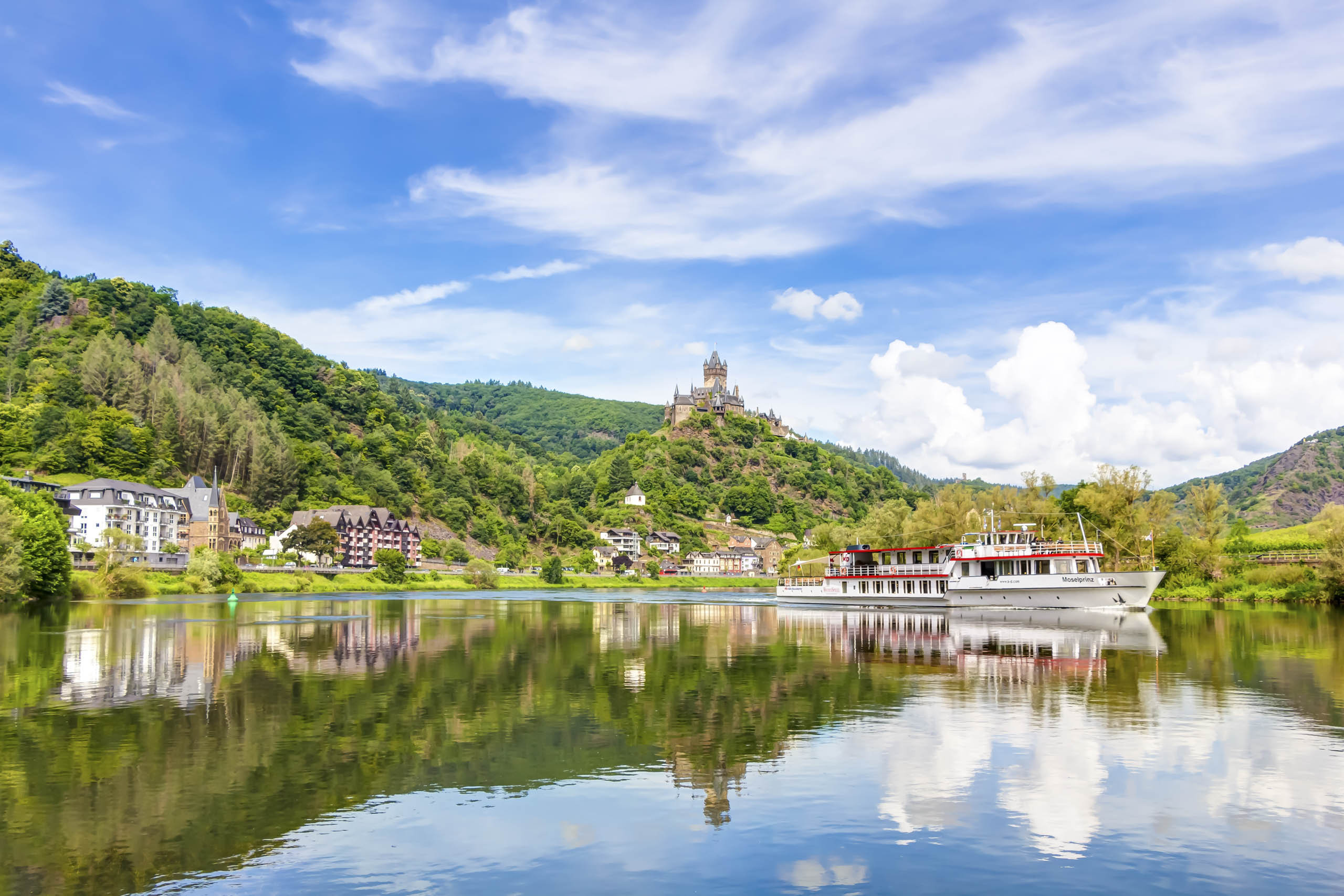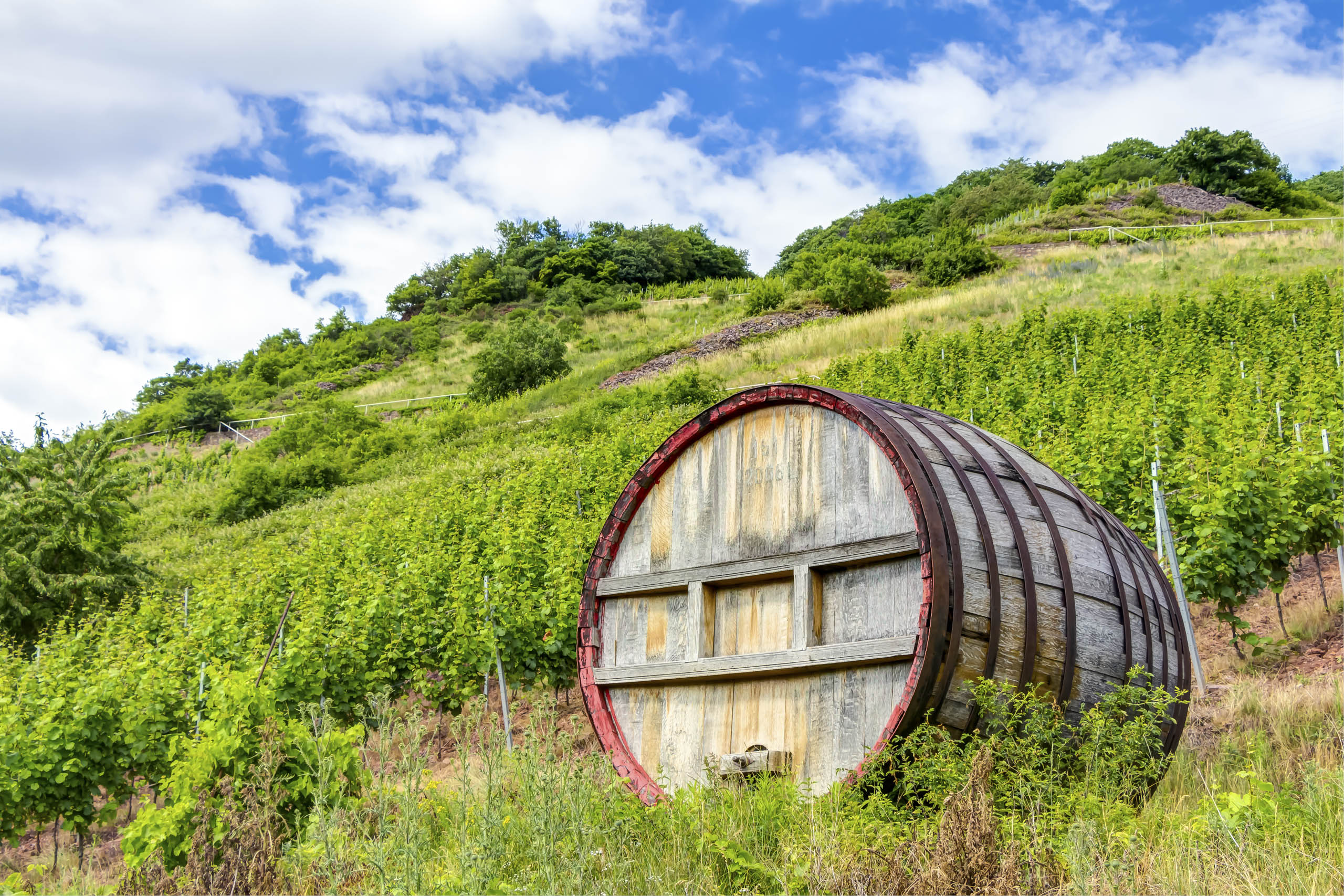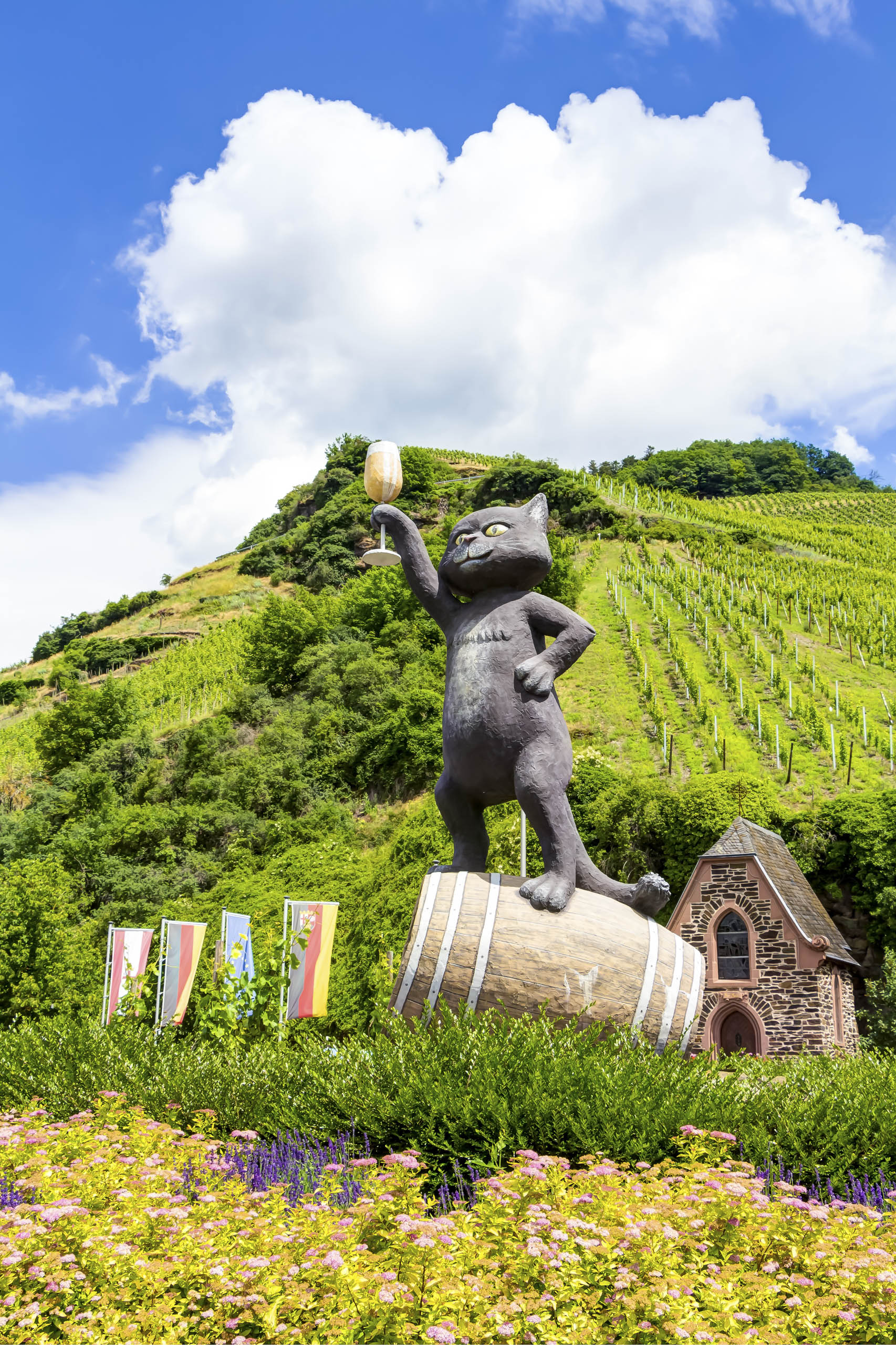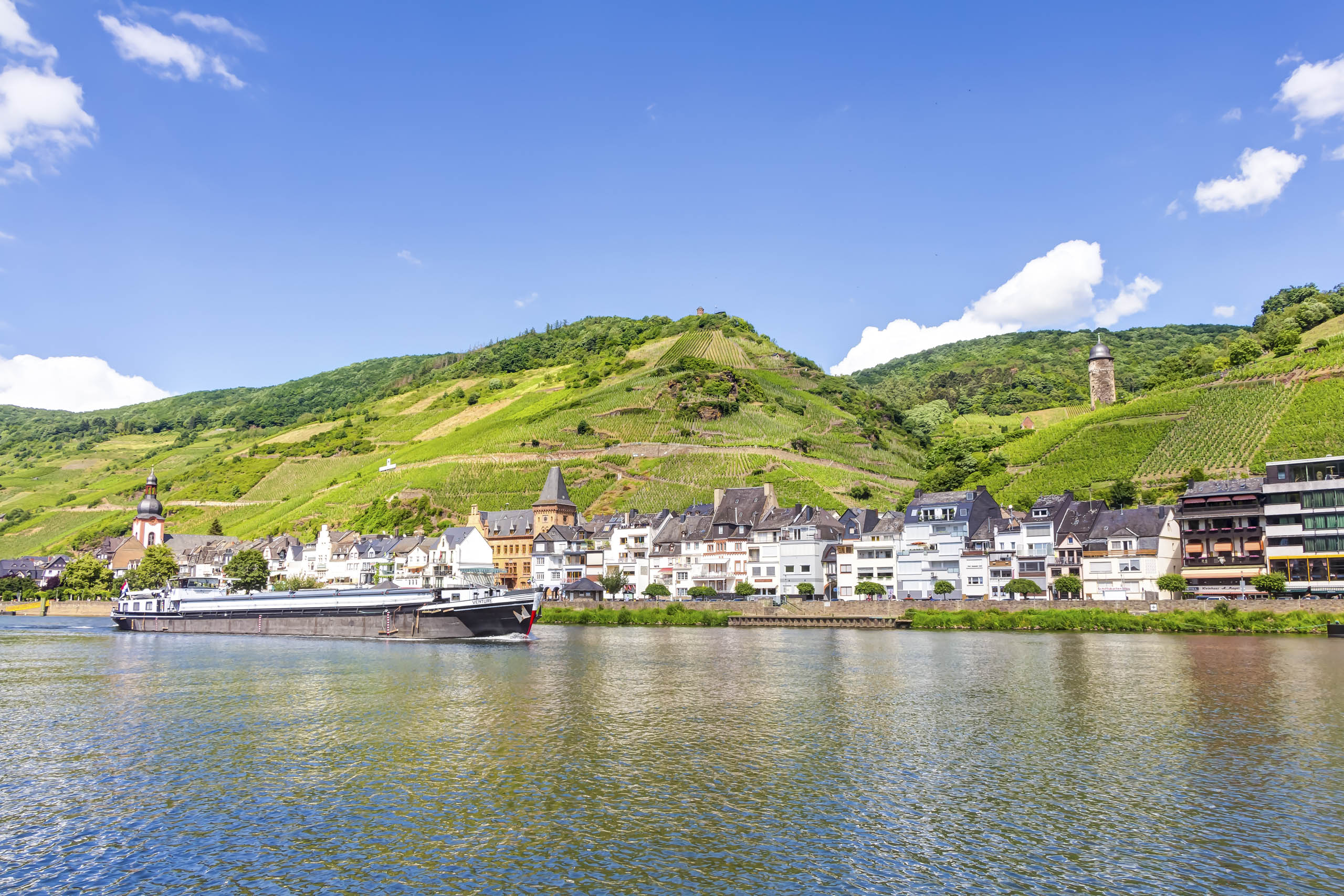To get straight to the point: I have seldom enjoyed such a charming, beautiful landscape as that of the Lower Moselle between Cochem and Zell. The fact that I haven’t been on holiday for a long time may play an additional role, but it doesn’t detract from the overall impression.
The good (is) so close
From our accommodation, a small family-run winery in the sleepy village of Mesenich, all the immediate tourist destinations and photographic projects were very easy to achieve. From Cochem with its beautiful old town and imposing Reichsburg castle to Zell an Mosel, there is plenty to discover.
Depending on the means of transport, different perspectives and impressions were offered. As a not-so-sporty person, renting a pedelec was exactly the right decision for a day trip on two wheels. It is advisable for coping with the heights, everything else is very strenuous. Almost every larger town offers the possibility of renting a bike. The same applies to stopping for refreshments to strengthen body and soul. The tour led along the Moselle from Zell via Pünderich to Reil and from there through the vineyards and forests to the Marienburg in the Zeller Hamm and then back to Zell. All in all, this made about 30 km at various altitudes in about four hours, including refreshments and various stops for photographs.
The entire Moselle landscape is characterised by winegrowing and is one of the most famous winegrowing regions in Germany. The steep slopes, where every square metre is used for cultivation, are simply impressive. The circumstances in which the grape harvest used to be done by hand and without the help of machines are unimaginable today. The Calmont near Bremm is particularly impressive, with a steep slope of up to 65%.
Many vineyard slopes are terraced and can thus be traversed to different heights. You notice the benefit of these vineyard slopes immediately; it heats up noticeably when the sun shines and the heat is stored for longer – exactly what the wine needs for a good harvest.
Beastly good wines
Of course, it is obvious to taste the precious goodness of grape juice on site. There are plenty of opportunities, and our overnight winery also offered several types of wine from its own cultivation. The supply chain between producer and consumer could not be any shorter 🙂
My grandfather, who was a winemaker, gave me some of the basics of winegrowing. I am far from being a gourmet who can distinguish 100 % between a Rivaner and a Pinot Gris, but I can still detect certain taste notes and differences and “behaviour in the glass”. All the varieties tasted were very good; I had not expected such a broad range.
The Black Cat can be found everywhere in the small town of Zell. It stands for the vineyard site in the wine-growing region of the Moselle in the Zell area. According to the story, wine merchants could not decide on a variety for sale after a wine tasting. When a black cat jumped onto one of the wine barrels and defended it with all its might, the wine merchants decided on this one. This wine subsequently sold so successfully that all the wines from the corresponding vineyard site were later bought up. The site was subsequently given its name Schwarze Katz (Black Cat) and is today a protected, regional seal of quality for wines from this region.
The Moselle landscape is worth more than just a trip and there is still much to discover. What remains at the end? Many beautiful pictures (not only in our heads) and a promise: We will gladly come again!







0 Comments